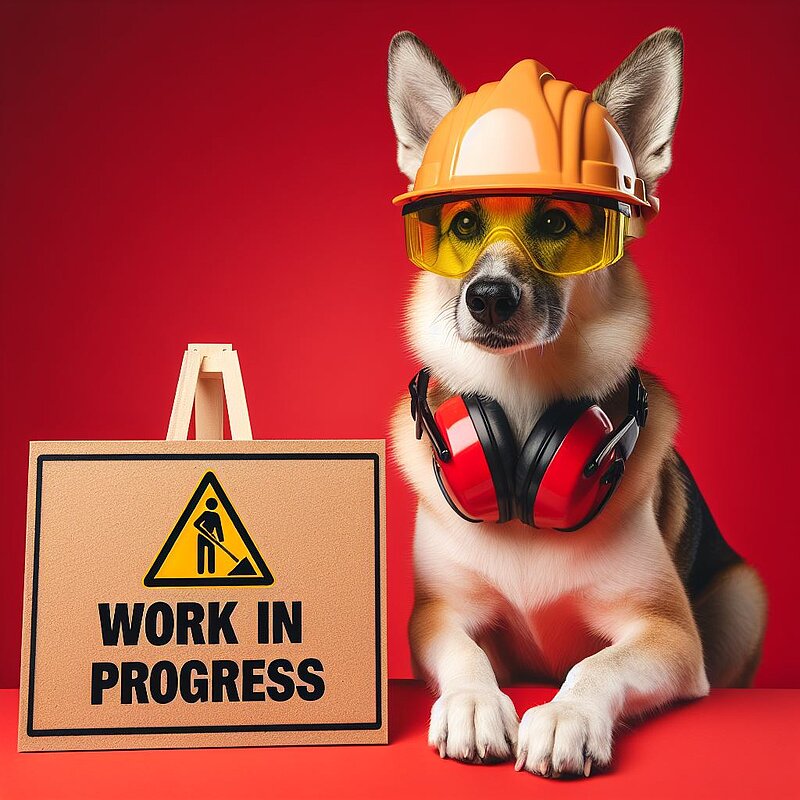
The Hollandse Smoushond: The charming rough-haired dachshund from the Netherlands
History of the Hollandse Smoushond
The Hollandse Smoushond, also known as the "Dutch Smoushond" or "Dutch Ratter", has a long and interesting history. This breed dates back to the 19th century and was originally bred as a stable dog to catch rats and mice. The name "Smous" is derived from the Dutch word for "mouse", which refers to their original task. These dogs were particularly popular with coachmen and farmers who wanted to keep their farms and stables free of rodents. Over time, however, the Hollandse Smoushond became more appreciated as a companion dog, and its friendly nature made it a popular family member.
Who is the Hollandse Smoushond suitable for?
The Hollandse Smoushond is ideal for families, singles and seniors who are looking for an active and friendly companion. This breed is particularly suitable for people who can spend a lot of time with their dog and want to provide them with sufficient exercise and mental stimulation. Due to their friendly and social nature, they get along well with children and other pets.
Character description
The Hollandse Smoushond is a lively, cheerful and intelligent dog. They are known for their friendliness and their ability to learn new commands quickly. These dogs are very people-oriented and love to spend time with their family. Their alertness and courage make them excellent guard dogs, although they are not usually aggressive.
Appearance of the Hollandse Smoushond
The Hollandse Smoushond has a distinctive, shaggy appearance with a dense, weatherproof coat that comes in various shades of yellow. They have a strong, but not too bulky build and radiate a certain elegance. Their eyes are dark and expressive, often with a cheerful sparkle that reflects their playful character.
Care of the Hollandse Smoushond
The Hollandse Smoushond's coat requires regular grooming to prevent matting. Weekly brushing is a must, especially during the coat change in spring and fall. As their coat is relatively long, the ears should also be checked regularly and kept clean to prevent infections. An occasional visit to the groomer can also be helpful to keep the coat in shape.
Health
The Hollandse Smoushond is generally a robust and healthy breed. They do not have any specific genetic diseases that frequently occur in them. However, regular veterinary check-ups and a balanced diet are essential to maintain their health. As with all dogs, it is important to maintain healthy weight control to avoid obesity.
Size and weight
An adult Hollandse Smoushond reaches a shoulder height of around 35 to 42 cm and weighs between 9 and 10 kg. This compact size makes them ideal companions for people looking for a medium-sized dog that can cope well both indoors and outdoors.
Exercise requirements and suitability for the city
The Hollandse Smoushond is an active dog that needs regular exercise. Daily walks and playtime are important to keep them physically and mentally busy. They are adaptable and can also live happily in a city apartment as long as they get enough exercise and activity. A garden is ideal, but not a must if they are given enough exercise outside the home.
Training recommendations
This intelligent breed learns quickly and responds well to positive reinforcement. Consistency and patience are the keys to successful training. Early socialization is important to ensure they are good with other dogs and people. Basic obedience training should start early, and it can be helpful to teach them tricks and tasks to keep them mentally stimulated.
Behavioral characteristics and interactions with children and other animals
The Hollandse Smoushond is known for its friendly and social nature. They are great family dogs and get along well with children. Their playful nature makes them ideal playmates. They also tend to get along well with other pets, including cats, especially if they grow up together from an early age.
Recognition by the FCI
Yes, the Hollandse Smoushond is recognized by the Fédération Cynologique Internationale (FCI) and is listed in Group 2 (Pinschers and Schnauzers, Molossoids and Swiss Mountain and Cattle Dogs) under Section 1 (Pinschers and Schnauzers).